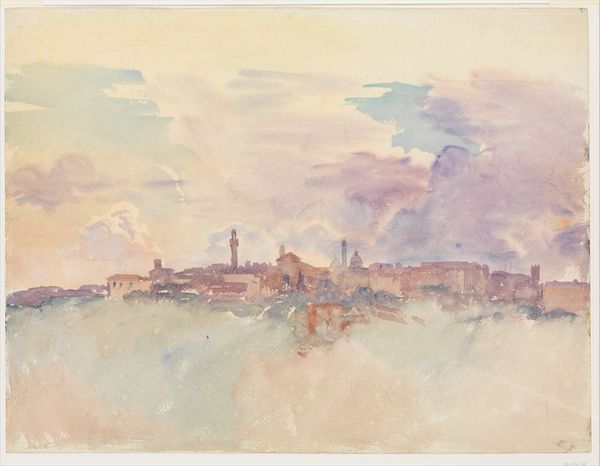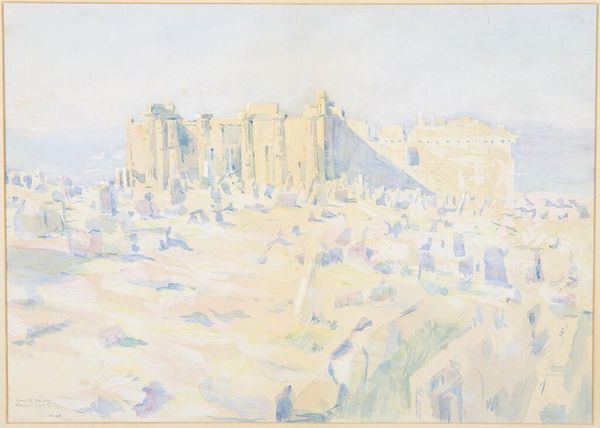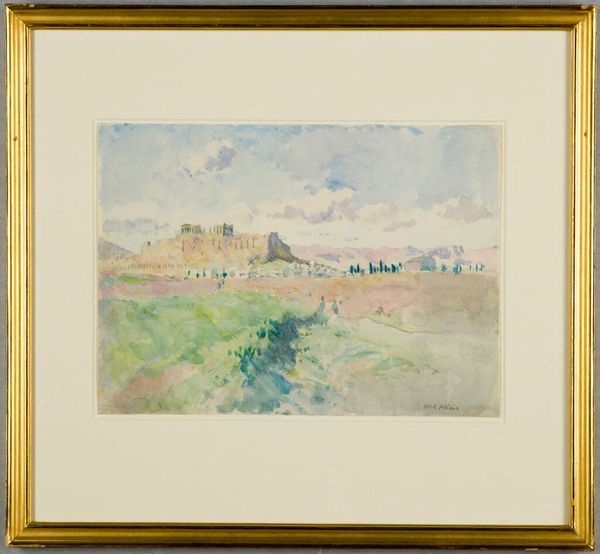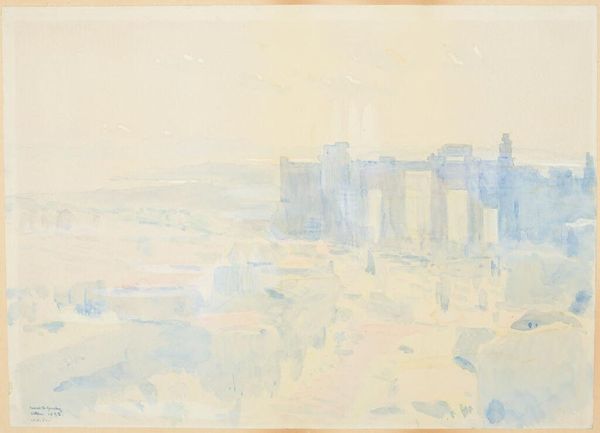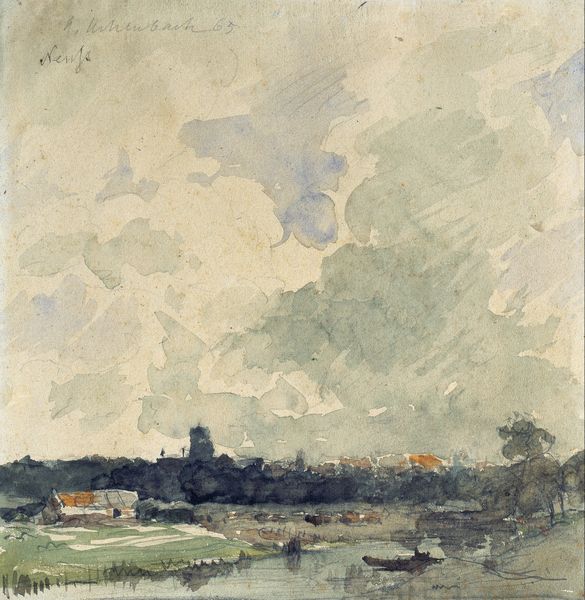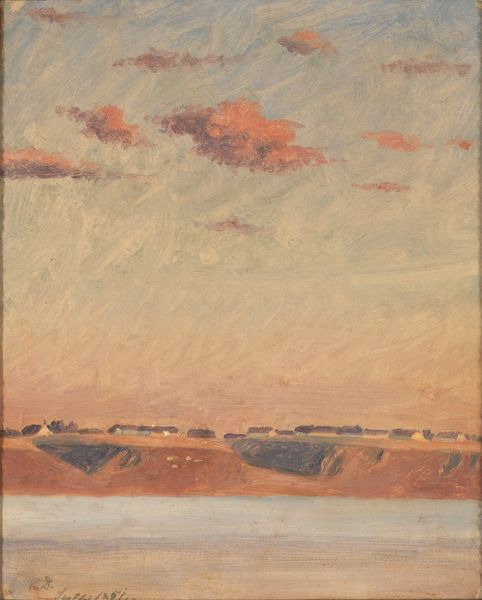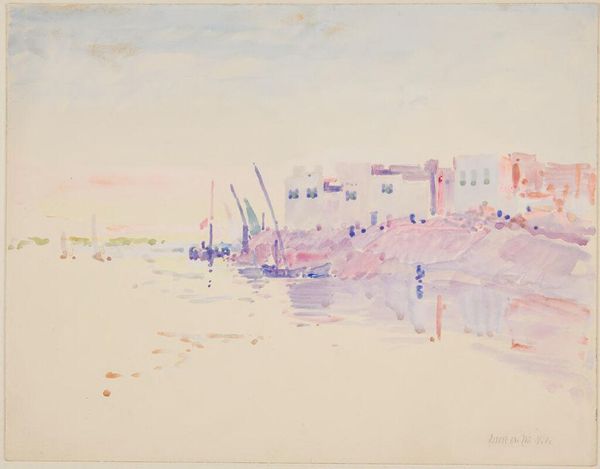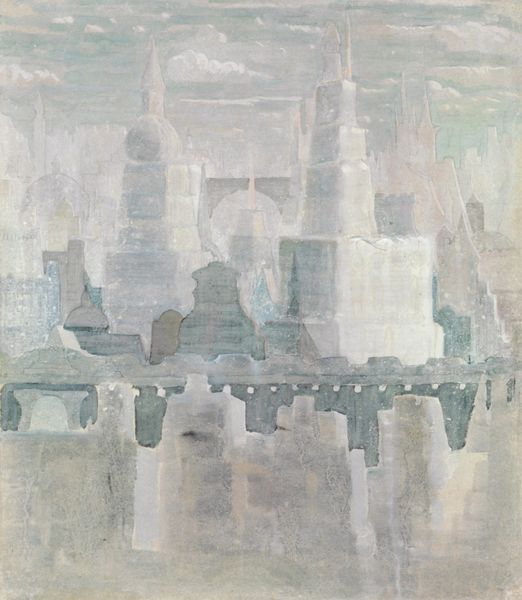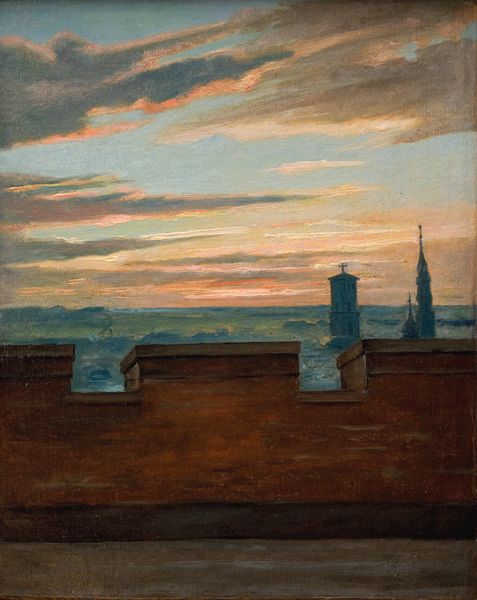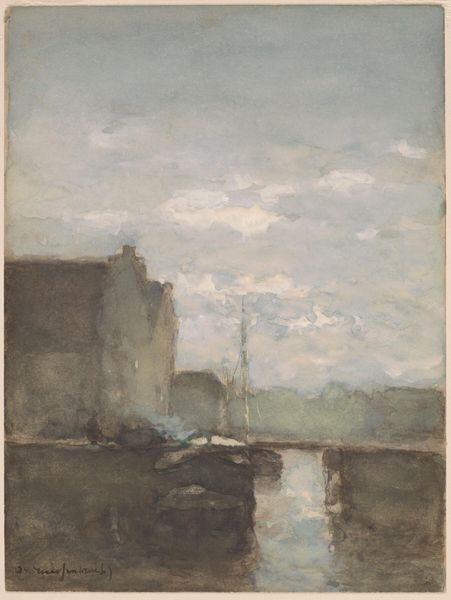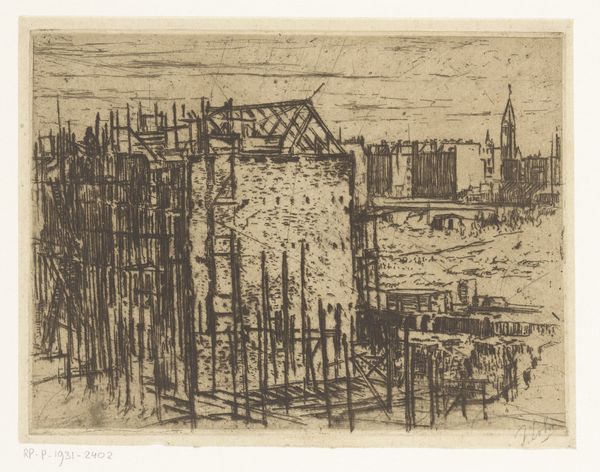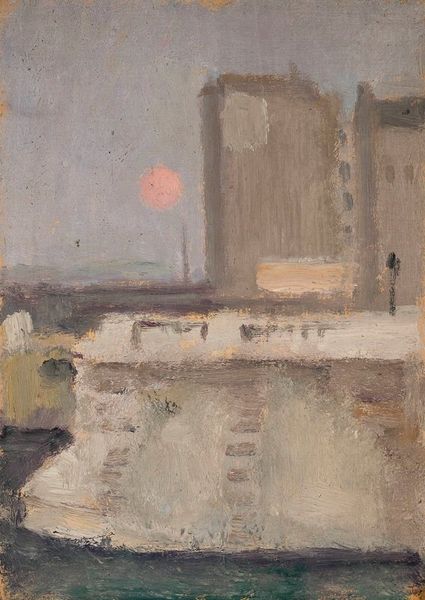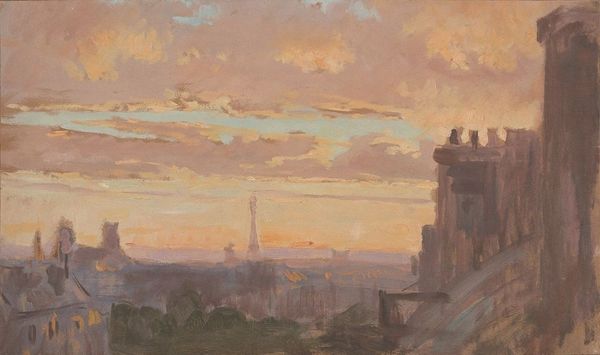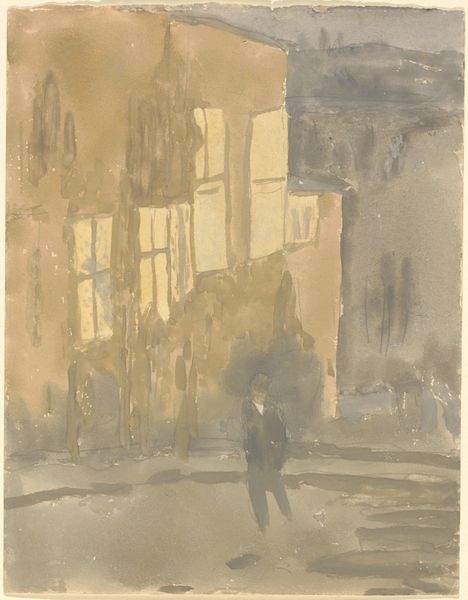
painting, plein-air, watercolor
#
painting
#
plein-air
#
landscape
#
watercolor
#
romanticism
#
cityscape
#
watercolor
Dimensions: 11 5/16 x 8 15/16 in. (28.73 x 22.7 cm)15 11/16 x 18 7/16 x 2 1/4 in. (39.81 x 46.83 x 5.72 cm) (outer frame)
Copyright: Public Domain
Richard Parkes Bonington created this painting of Rouen Cathedral using oil on paper. Notice how the structure is rendered through a misty veil, emphasizing light and atmosphere. The composition is divided into horizontal layers: the sky, the cathedral, the buildings in the foreground, and the water. The architectural elements are softened, and the sky blends seamlessly with the stone. Bonington uses swift, broken brushstrokes to capture the transient effects of light on the building's surfaces. This piece reflects the Romantic era’s interest in sublime architectural views and the picturesque. Bonington masterfully captures a sense of place while exploring the formal qualities of light, color, and texture. The soft focus and muted palette destabilize the fixed, monumental status of the cathedral, transforming it into an object of fleeting beauty. The painting functions as both a visual record and a meditation on the ephemeral nature of perception. This piece encourages us to consider how art mediates our understanding of space, history, and cultural values.
Comments
minneapolisinstituteofart almost 2 years ago
⋮
Although Bonington died prematurely at age 25, he was a prolific virtuoso who left his mark on the development of European painting. Connoisseurs have always ranked him with Théodore Géricault and Eugène Delacroix as one of the three pillars of French Romanticism, and with John Constable and J. M. W. Turner as the most influential British landscape painters of the 19th century. Bonington's genius as a painter was so seductive that he attracted a host of admirers and imitators in both France and England. Two of his closest friends were Delacroix and Paul Huet, while Camille Corot admitted to becoming an artist only after seeing examples of Bonington's paintings in an art dealer's shop window. Corot's oil sketch in Rome of 1826 offers an illuminating comparison with Bonington's Rouen sketch of 1825, which is concerned less with the subject depicted than with the art of quickly recording one's impressions of light, color and atmosphere in nature.
Join the conversation
Join millions of artists and users on Artera today and experience the ultimate creative platform.
